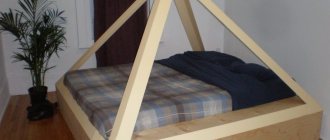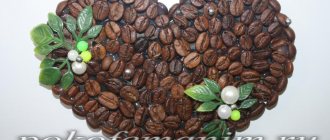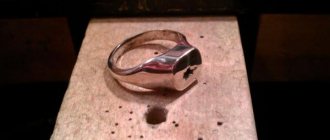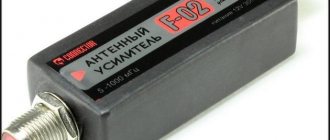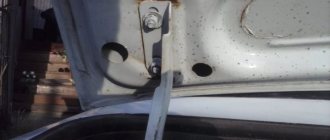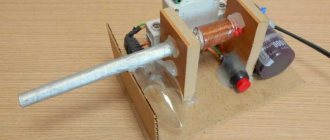Five thousand years ago, minters from Egypt discovered a new type of joining metals using the soldering method. The essence of the method is to create a connection between different metals by filling the seams with solder, which is a molten material with a melting point lower than that of the parts of the product being connected. Unlike steel, it is more expedient to connect copper parts by soldering rather than welding. This is especially important if you have to work with thin-walled copper pipes, which are widely used in heating, plumbing, gas and refrigeration systems. Even a beginner can handle this kind of work.
Chemical composition of the alloy for joining materials
Pure silver is a soft metal and is therefore not suitable for work.
Mostly, craftsmen use mixtures that contain zinc, nickel, aluminum, copper, and cadmium. In addition to silver, silver solders also contain zinc and copper. A seam made with this composition is strong and durable. Compounds of silver, copper, zinc have a high melting ability. They are used for silver solder. To control its percentage composition, GOST 19746 74 was developed. Solders, silver grades, are always indicated in the instructions for the products. The soldering seam obtained in this way is durable.
Modern soldering processes involve the use of silver solder, which, when connecting nodes, is suitable for step soldering. Such work requires the use of an alloy that can withstand temperatures of 600°C.
The solder contains ingredients such as 30% silver, 20% copper, 16% zinc, 33% cadmium. The alloy is very brittle and is intended for soldering materials that are not subject to vibration. The composition with the amount of silver increased to 52% is very fluid, but withstands loads well during multi-stage stages of soldering materials.
Silver solder has high strength, is resistant to corrosion in aggressive environments, has a low melting point, and high thermal conductivity. During operation, it completely fills the gap between the parts being soldered and fits well on the metal surface.
When working, you need to make sure that the solder completely fills the gap between the parts.
An alloy of 28.5% copper of the PSr-72 grade has high ductility. When working on creating solder with your own hands, you should remember that its melting point with copper decreases when alloyed with lithium. The resulting alloy is used for soldering steel materials that are resistant to corrosion. To reduce the melting temperature of the solder, tin is added to it in an amount of 35 to 70%. The resulting alloy allows you to solder various materials, avoiding the formation of cracks.
Features of copper pipes
The chemical composition used in the production of copper pipes consists of 99% copper, but minor impurities of tin, iron, antimony, and lead are allowed.
Copper pipes are hard (not annealed) and soft (annealed). During manufacturing, through machining, the copper material loses its natural ductility.
This property can be restored by annealing the metal, that is, heating it to 600-700 degrees and then cooling it under natural conditions. As a result of such actions, the copper pipe receives some technological advantages over solid copper. Of course, a soft pipe loses in strength, but it is much superior in ductility, which increases the value of its elongation at break by 40-60%. This means that the soft pipe can be easily bent without fear of breaking. Due to the plastic deformation of copper, such pipes can prevent the water supply from rupturing if it accidentally freezes.
Copper pipes have the following advantages:
- durability of operation;
- strength;
- ability to be easily processed;
- are not afraid of ultraviolet radiation;
- withstands the highest possible temperatures;
- operate safely under high pressure;
- have bactericidal properties;
- do not corrode;
- have high thermal conductivity and a smooth surface.
Of course, the higher cost of copper compared to other modern materials can be attributed to its disadvantages, but soldering technology allows you to save on fittings.
Chemical composition of the alloy for joining materials
The process technology is based on the use of silver solder intended for step soldering. Considering that the solder must withstand temperatures up to 600 °C, its components are: 33% cadmium, 30% silver, 16% zinc, 20% copper. The composition is quite fragile and cannot withstand vibrations. By increasing the amount of silver to 52%, a fluid mixture is obtained that can withstand multi-stage soldering.
The creation of homemade solder is mainly for the private sector. Do-it-yourself silver solder is often made in order to carry out step soldering, when it is necessary to solder several layers of metal, since it is necessary to obtain a layer of great thickness, which cannot be created at one time.
To create such a material, you need to take 30% silver. Additional elements will be cadmium, which should be 33%, zinc - 16%, and copper - 20%. It is advisable not to use this alloy in places that are subject to strong vibrations and shocks, as it is brittle and can be destroyed under mechanical stress.
Silver solder
An ancient recipe for cooking silver solder
Let's try to figure out how to make silver solder at home. There are several options for its manufacture, each with its own nuances. To obtain the alloy, you will need a coin (fifty kopecks) from 1924, as well as five kopecks from 1962. For work you need: ingus, silver, gas burner, spoon.
Making silver solder begins with melting the precious metal. Then a five-kopeck coin is added. To ensure complete mixing, roll the mixture onto a spoon. The final result of mixing depends on the duration of this process. The disadvantage of this technology is the burnout of the chemical components needed for solder.
It is most convenient to heat solder on a gas burner.
- silver;
- spoon (not tablespoon);
- ingus;
- gas-burner.
At the beginning of the work, silver is melted in a spoon. Add a five-kopeck coin to the resulting melt and roll the mixture over a spoon for better mixing. The longer the spoon is rolled, the better the mixing process occurs. But there is one significant drawback: many components necessary for solder burn out.
Then the master who makes the alloy with his own hands pours it into ingus and rolls it out without annealing. The resulting solder is of high quality: 10 g refers to the 900th sample.
When soldering, it is very important to prepare fresh flux, which will ensure high-quality work. It is necessary to carefully monitor the size of the flame in the burner: a soft, not very hot fire in the form of a broom will ensure a high-quality seam.
For work, hard solders are used, which contain: 80 Ag, 16 Cu, 4 Zn, 75 Ag, 22 Cu, 3 Zn. Soft solders include: 65 Ag, 20 Cu, 15 Zn.
To obtain light silver solder used in repairing products, you need to prepare: 7 parts silver, 2.8 parts brass, 0.35 parts zinc. It is important to clean the brass from the oxide film before starting work. To obtain 10 g of solder, 999 silver is melted. After obtaining the liquid composition, add brass and mix the contents in a spoon.
- sandpaper;
- spoon;
- gas burner;
- mixing spatula;
- folds;
- scissors;
- scales.
Pure silver is not used for solder, as it is too expensive a metal.
- silver;
- brass;
- pure zinc;
- borax, which is added to the molten composition.
Sometimes pure zinc is not added: it is better to use its alloy with brass or copper. Zinc is added to the solder, wrapped in silver foil.
Substances for production
You can prepare your own soldering flux using substances such as alcohols, acids, and oils of various origins. They are valued for their high antioxidant properties and good solubility.
When choosing how to make flux for soldering, preference can be given to the simplest substance - acetylsalicylic acid, or, more commonly, aspirin. You can easily find it in a pharmacy, or even find it in your home medicine cabinet. This drug has a low cost. Before starting work, dissolve an aspirin tablet in a small amount of liquid until the sediment disappears.
Instead of aspirin, white citric acid granules can be used. When using aspirin or citric acid, a significant amount of gas is released, so the room where soldering occurs must have adequate ventilation.
Rosin and glycerin
Liquid flux can be prepared from rosin. Before making flux, you need to crush the rosin into a fine powder using a wooden hammer. The preparation time of the flux depends on the degree of grinding.
Then dissolve this powder, which has the consistency of powder, in ethyl or medical alcohol using a glass container. After thorough stirring, the solution should be left for some time to completely dissolve.
Next, to completely dissolve the rosin in alcohol, place the settled solution in a hot water bath and heat it to a temperature of 80 degrees. During heating, the solution must be constantly stirred, and then wait until it cools. For soldering, it is convenient to draw the solution with a syringe.
Glycerin flux can be prepared in a similar way by dissolving rosin not in alcohol, but in glycerin. Rosin crushed into powder will take longer to dissolve in glycerin, but the solution itself will be thicker, which will make working with it easier. The quality of the composition will improve if you first dissolve the crushed rosin in ethyl alcohol and mix the solution with glycerin. This mixture must be washed off after soldering.
Acid based
Recommendations on how to prepare acid-based soldering flux include hydrochloric acid and phosphoric acid. High concentration hydrochloric acid must be diluted in half with water. This solution is poured into zinc granules placed in a glass container.
The dissolution of zinc in hydrochloric acid is accompanied by a violent reaction consisting of a significant release of hydrogen. Therefore, the room must be well ventilated. There should be no open fire near the place of work.
Flux obtained using hydrochloric acid can be used to solder steel products. By adding a little ammonia to the solution, it becomes possible to solder various metals and alloys. A successful flux is obtained using phosphoric acid. It can be used when joining stainless steel products.
Liquid fluxes can be applied to products with a thin brush. Store in a glass container with a narrow neck to reduce the possibility of evaporation.
Fat mixtures
Soldering fat is of interest mainly to professional welders. However, even in this case it is possible to make flux paste with your own hands. Solder fat received this name due to its external resemblance to a substance of animal origin.
To prepare neutral solder fat, a mixture of rosin and stearin is used. It successfully dissolves the existing oxide film. Soldering with its use is carried out with fewer problems. The fluidity of solder increases, which makes it possible for it to get into various crevices and uneven surfaces. Due to its good solubility, such a paste is easy to remove from the surface after the end of the process.
The essence of neutral soldering flux is that after the soldering tip heats it, it goes into liquid form and, when burned out, forms a protective film, the function of which is to prevent surface oxidation.
Another form of paste is active solder grease. It contains substances such as petroleum jelly, zinc, ammonium chlorides and paraffin. This flux is used for soldering heavily oxidized surfaces, as well as metals that are difficult to undergo this process.
The use of active solder fats is not recommended for working with electronics and other delicate items, since aggressive substances can destroy delicate parts.
Engineering works
For technical work, silver solders are used containing up to 80 parts of silver, 16 parts of copper, 4 parts of zinc. Of interest are jewelry silver solders, the composition of which is: 2.8 parts brass, 7 parts silver, 0.2 parts zinc. Before starting work, the brass is cleaned of the oxide film. To obtain 10 grams of such solder, 999 silver is melted.
Brass is added to the liquid metal and mixed in a spoon. After complete melting, the mixture is combined with zinc, and the resulting composition is rolled. Next, the rolled sheet is cut with scissors and weighed on a scale. For effective work you need: a spoon, sandpaper, a gas burner, scales, folds, a stirring spoon.
- Before you start soldering silver, you should prepare the product made from it for work, namely, clean it of contaminants (a degreaser is suitable for this purpose). A thin layer of flux is applied to the treated surface of the product with a brush.
- The parts that need soldering are then placed on the brick. To securely fix the elements, you need to use clamps and nichrome wire.
- A piece of solder is placed on the part that needs soldering. How to take a fragment: you need to take a strip and use wire cutters to cut off a piece measuring 2 by 2 millimeters.
- Take a gas burner and place it on the side of the decoration. The area being treated is heated evenly, but as soon as the flux melts, the flame should be intensified and continued to work until a seam is formed.
- After soldering, the product should be cleaned of flux and excess solder. Sandpaper is suitable for this purpose.
- Then the decoration should be dipped into a container of water, and then into an etching solution. If the solution gets on your skin, wash it off immediately with water.
During work, care should be taken to comply with personal safety regulations. First of all, it is necessary to ensure access to air in the work area - just open the window. You should work in a denim apron (denim is highly flammable) and safety glasses.
Copper pipe soldering technology
The entire technological process of connecting parts made of copper material can be divided into preparatory operations and the actual stage of creating a strong joint.
Basic connection operations using a torch:
- It is most convenient to cut a pipe using a pipe cutter. To do this, the tool is installed on the workpiece so that the cutting roller coincides with the cutting line. Next, the screw is clamped and a cut is made by rotating it around the axis of the pipe. After every two revolutions, the rotation of the screw presses the cutter towards the pipe. You can cut metal with an ordinary hand hacksaw, but it is very difficult to achieve a perpendicular cut.
- After cutting, you need to remove the outer and inner edges. The outer chamfer is removed to facilitate assembly, but the inner chamfer may resist the flow of water or gas. There are special devices for carrying out this type of operation. Sometimes they are built directly into the pipe cutter, and sometimes they act as a separate device.
- The next step is to clean the mating parts of the part from oxides. The outer surface can be easily cleaned with fine abrasive paper or a special device with a hole framed by a steel brush. To clean the inner edge, brushes, mesh or sandpaper are used, screwed onto any pin of the appropriate diameter. After cleaning the surface to a shine, you need to remove any remaining abrasive, which significantly reduces the quality of soldering.
- After cleaning, it is necessary to apply flux to the surface. The paste-like composition is applied with a brush to the outer part of the inserted pipe. After this, the parts are immediately connected to avoid debris.
- During assembly, the mating parts must be rotated relative to each other in order to achieve complete distribution of the flux over the surface. Then excess flux is removed with a cotton rag, and the parts are fixed in a position convenient for soldering.
- Before you start heating the pipes, you must remove all plastic and rubber parts that may be damaged during soldering. The burner flame should be normal - without a lack or excess of oxygen. A balanced flame has a bright blue color. Excess oxygen in the flame oxidizes the metal surface, as indicated by black oxide deposits. It is necessary to heat the joint evenly, moving the flame from different sides of the product. When the solder begins to melt, the soldering temperature has reached the optimal value. After completely filling the connecting seams with molten solder, you need to move the burner flame away from the joint and allow the soldering area to cool naturally.
Melting solder
By melting the metals that are part of the mixture, silver solder for steel is obtained in a crucible. Place the gel in the forge, having prepared special equipment: borax, a container with water, a coal mixture, an iron hook, a crucible. First you need to melt the refractory metals, and then low-melting metals are added to the mixture.
To make high-quality solder with your own hands, the work must be divided into two stages. First, the crucible is removed from the furnace and the metal is combined in a container filled with water. As a result, fine-grained drops of solder appear. They are dried, then melted again, covered with borax. Once the metal is completely melted, it is poured into special molds. After hardening, the bars or tiles are rolled into thin strips. For subsequent use, they are cut on a lathe into thin wire.
By melting the metals that make up the alloy in a crucible, silver solder is obtained. The crucible is placed in a furnace or the components are melted using a blowpipe. Before work you need to prepare the equipment:
- crucible;
- wooden stick or iron hook;
- borax;
- charcoal mixture;
- container with water.
Solder components are melted using borax. The order of the operation is observed: refractory metals are melted first, then low-melting metals are added.
The solder components are melted using borax.
To make solder with your own hands, liquid metals are constantly stirred in a crucible with a wooden rod or an iron hook. To create higher quality solder, the entire process is divided into two stages. The crucible is pulled out of the furnace, and the metal is combined in a container with water. Fine-grained drops are formed, which are dried and melted a second time, covered with borax on top.
After complete melting, the metal is poured into molds. The frozen tiles or bars are rolled into strips, which are crushed on a lathe.
For technical soldering of silver objects, alloys consisting of metals are suitable: 20% copper 80% silver, 4% tin 48% brass. When soldering steel with silver solder, the phase diagram between copper and silver is taken into account.
Necessary materials and equipment: tin and others
The following tools are required for working with copper pipes:
- pipe cutter, hacksaw or grinder with a thin disk;
- chamfer;
- pipe expander (expander);
- soldering flux;
- solder;
- soldering iron for copper, for example, a propane torch for soldering copper pipes;
- rubberized gloves;
- paper napkins.
Pipe cutters of various sizes are used to cut pipes. Larger samples have a large turning radius and are inconvenient to use in hard-to-reach places, so if there is a need to cut off a section of a finished installed water supply, use a small pipe cutter. You can cut the pipe with a hacksaw or a grinder with a thin disk, but a better cut can only be achieved using a pipe cutter.
After the pipe is cut, the burrs are removed. This is necessary to ensure that there is no turbulence in the fluid flow in the system. When there are no obstacles, the water supply does not experience stress and works like a clock.
Before welding the copper, the ends of the pipe are polished with fine-grained sandpaper, which can be purchased at hardware stores. They clean both surfaces that are preparing for soldering. Sometimes small brushes with a diameter of Ø 22 mm are used for these purposes; they are suitable for almost all pipes. For cleaning, the stem of the brush is inserted into a screwdriver or drill, with the help of which the process is carried out faster and with better quality.
Flux is applied to the cleaned, smoothed outer surface - a composition that prevents the oxidation process of copper.
Rubberized gloves are used to protect hands, since when cutting copper and burrs, many small metal elements are formed that dig into the skin like splinters. In addition, when cleaning the surface with a drill, the rotating brush chews on rag gloves.
To solder copper correctly, you need to take into account that from the moment of stripping and applying flux to soldering, no more than half an hour should pass, otherwise the stripping must be repeated again. If the flux is applied with a brush, there should be no bristles or hairs from it left on the surface - otherwise the connection will not be tight and the pipeline will leak after water is supplied.
After inserting the pipe into the socket, the remaining flux is not completely removed with a napkin, it remains on the connection in the form of an edge of 1–2 mm, and when soldering, the solder is drawn inward - the capillary effect is triggered. First, the joint is heated with a burner, and the moisture between the walls is evaporated. Then the burner is brought up a second time, the copper gradually heats up, and the flux takes on a tin appearance. At this moment, solder is placed on the front side, soldering occurs, and the molten alloy flows down to the back side, solidifying as it moves. The excess metal overhangs that form below are separated on their own. Soldering copper can be done in different ways.
Features of silver soldering
Soldering with silver solder at home also involves the reverse process - the transformation of liquid metal into a solid state. First, it is important to completely melt the silver, then it is cast into the ingus. All work is divided into three stages: making a spoon - a melting pot, adding flux, placing the charge in the spoon, melting the starting material, placing it in the ingus.
Place a small cardboard rectangle at the bottom of the spoon, then a slightly larger plate so that it wraps around the edges of the spoon. Then the cardboard sheets are fried with high quality. The stock must be concave to achieve the desired result. The process of melting solder at home is lengthy, so you will have to be patient. Sorting of the charge is carried out on jewelry scales. The master will need the following materials:
- electronic jewelry scales;
- 20 g of 916 silver scrap;
- 875 silver scrap;
- pure silver (12 grams);
- borax;
- metal for solder;
- gas-burner
Silverware repair
Beautiful chains, bracelets, earrings, forks, spoons, silver glass holders decorate a person’s life. But over time, products made of precious metal break down and need repair and restoration. To perform such work you will need silver solder. For 925 standard, you can make it yourself, using the advice of professional jewelers.
For the work you will need the following materials and tools: regular and irregular-shaped soldering irons, solder casting, scrap silver. The easiest way to repair a broken chain is to take it to a jeweler. But if you wish, you can cope with the problem at home, saving money.
To perform such actions, it is important to have information about the physical and chemical characteristics of the material. The melting point of silver is 960 degrees Celsius. From the jewelers' point of view, this is an average figure. For example, copper can melt at 1083ºC, gold melts at 1063ºC.
Depending on the components that make up the silver, their temperature will vary. In order to accurately find out the characteristics of the alloy, you can use technical reference books. Marking of silver solders implies a sequence of Russian letters and numbers. The numbers characterize the percentage of noble metal in the solder.
To repair a silver product, you need to prepare a soldering iron and clean the surface of the product. Silver solder allows you to make strong, tight seams that are resistant to corrosion. When repairing jewelry, solder containing more than 70 percent silver or a special soldering paste is used.
How to choose the right flux
Even with knowledge of the varieties and technical characteristics, not every person understands how to choose a flux. For safe soldering, neutral fluxes should be chosen. They are suitable for working with a variety of parts, but when soldering large components, the work will be slow.
To speed up the process, you can use medium-active fluxes. Such compositions are suitable for working with various metals. For working with large parts, silver solders are ideal.
The best substitutes
It is not always possible to find solder at home to solder broken contacts or wires. In such situations, repairs can be carried out without purchased compounds. You can replace flux with several substances:
- amber;
- fat;
- "Aspirin";
- resin.
Before starting work, Aspirin must be dissolved in a small amount of liquid.
Resin on wood
